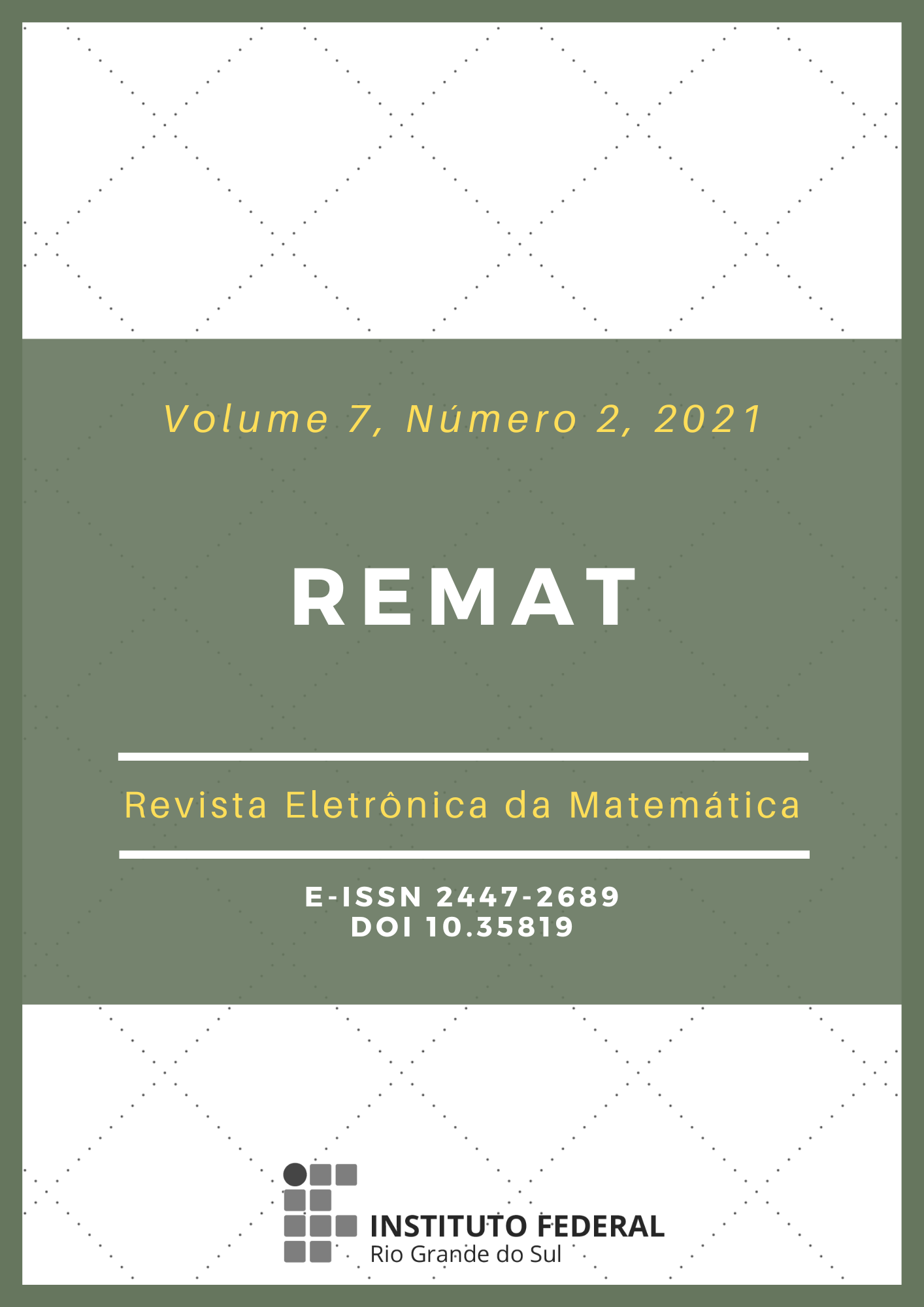Gaussian integral by Taylor series and applications
DOI:
https://doi.org/10.35819/remat2021v7i2id4330Palabras clave:
Gaussian Integral, Special Functions, Fractional DerivativeResumen
In this paper, we present a solution for a specific Gaussian integral. Introducing a parameter that depends on a n index, we found out a general solution inspired by the Taylor series of a simple function. We demonstrated that this parameter represents the expansion coefficients of this function, a very interesting and new result. We also introduced some Theorems that are proved by mathematical induction. As a test for the solution presented here, we investigated a non-extensive version for the particle number density in Tsallis framework, which enabled us to evaluate the functionality of the method. Besides, solutions for a certain class of the gamma and factorial functions are derived. Moreover, we presented a simple application in fractional calculus. In conclusion, we believe in the relevance of this work because it presents a solution for the Gaussian integral from an unprecedented perspective.
Descargas
Referencias
ARFKEN, G. B.; WEBER, H. J. Mathematical Methods for Physicists. New York: Academic Press, 2005.
BOAS, M. L. Mathematical methods in the physical sciences. New Jersey: John Wiley & Sons, 2006.
CONRAD, K. T. The Gaussian Integral, 2013. Available in: https://www.semanticscholar.org/paper/THE-GAUSSIAN-INTEGRAL-Conrad/4687538f80e333c175691d627dc1254eef3605f8. Access in: 2020.
DAVIS, P. J. Leonhard Euler's Integral: A Historical Profile of the Gamma Function: In Memoriam: Milton Abramowitz. The American Mathematical Monthly, v. 66, p. 847-869, 1959.
GREINER, W. Quantum Mechanics: An Introduction. Berlin: Springer, 1990.
GREINER, W. Thermodynamics and Statistical Mechanics. Berlin: Springer, 1995.
GRONAU, D. Why is the gamma function so as it is? Teaching Mathematics and Cumputer Science, v. 1, p. 43-53, 2003.
HERNANDEZ, S. M. Termodinàmica i Mecànica estadìstica. London: Lulu, 2015.
LAPLACE, P. S. Théorie Analytiques des Probabilités. Paris: Courcier, 1820.
OLIVEIRA, E. C.; MACHADO, J. A. T. A review of definitions for fractional derivatives and integral. Mathematical Problems in Engineering, v. 2014, p. 1-6, 2014.
PATHRIA, R. K. Statistical Mechanics. Oxford: Butterworth-Heinemann, 1996.
PESSAH, M. E.; TORRES, D. F.; VUCETICH, H. Statistical mechanics and the description of the early universe. (I). Foundations for a slightly non-extensive cosmology. Physica A, v. 297, p. 164-200, 2001.
RILEY, K. F.; HOBSON, M. P.; BENCE , S. J. Mathematical Methods for Physics and Engineering. Cambridge: Cambridge University Press, 2006.
SAKURAI, J. J. Modern Quantum Mechanics. New York: Addison-Wesley, 1985.
SALINAS, S. R. A. Introduction to Statistical Physics. New York: Springer, 2001.
SHEN, K. M.; ZHANG, B. W.; WANG, E. K. Generalized ensemble theory with non-extensive statistics. Physica A, v. 487, p. 215-224, 2017.
SPIEGEL, M. R. ; SCHILLER, J. ; SRINIVASAN, R. A. Schaum's Outline of Probability and Statistics. New York: McGraw-Hill, 2001.
STAHL, S. The Evolution of the Normal Distribution. Mathematics Magazine, v. 79, n. 2, p. 96-113, 2006.
STIGLER, S. M. Laplace's 1774 memoir on inverse probability. Statistical Science, v. 1, p. 359-378, 1986.
STURM, J. K. F. Cours d'Analyse de l’école polytechnique. Paris: Mallet-Bachelier, 1857.
TSALLIS, C. Possible generalization of Boltzmann-Gibbs statistics. Journal of Statistical Physics, v. 52, p. 479-487, 1988.
WEISSTEIN, E. W. Gaussian integral. From MathWorld-A Wolfram Web Resource. Available in: http://mathworld.wolfram.com/GaussianIntegral.html. Access in: 2020.
WEISSTEIN, E. W. Hypergeometric Function. From MathWorld-A Wolfram Web Resource. Available in: https://mathworld.wolfram.com/HypergeometricFunction.html. Access in: 2020.
Descargas
Publicado
Número
Sección
Licencia
Derechos de autor 2021 REMAT: Revista Eletrônica da Matemática

Esta obra está bajo una licencia internacional Creative Commons Atribución 4.0.
REMAT conserva los derechos de autor de los artículos publicados, teniendo derecho a la primera publicación del trabajo, mención de la primera publicación en la revista en otros medios publicados y distribución de partes o del trabajo en su conjunto con el fin de promover la revista.
Esta es una revista de acceso abierto, lo que significa que todo el contenido está disponible de forma gratuita, sin costo para el usuario o su institución. Los usuarios pueden leer, descargar, copiar, distribuir, imprimir, buscar o vincular los textos completos de los artículos, o utilizarlos para cualquier otro propósito legal, sin solicitar permiso previo a la revista o al autor. Esta declaración está de acuerdo con la definición de BOAI de acceso abierto.













 https://orcid.org/0000-0002-0893-7426
https://orcid.org/0000-0002-0893-7426


















